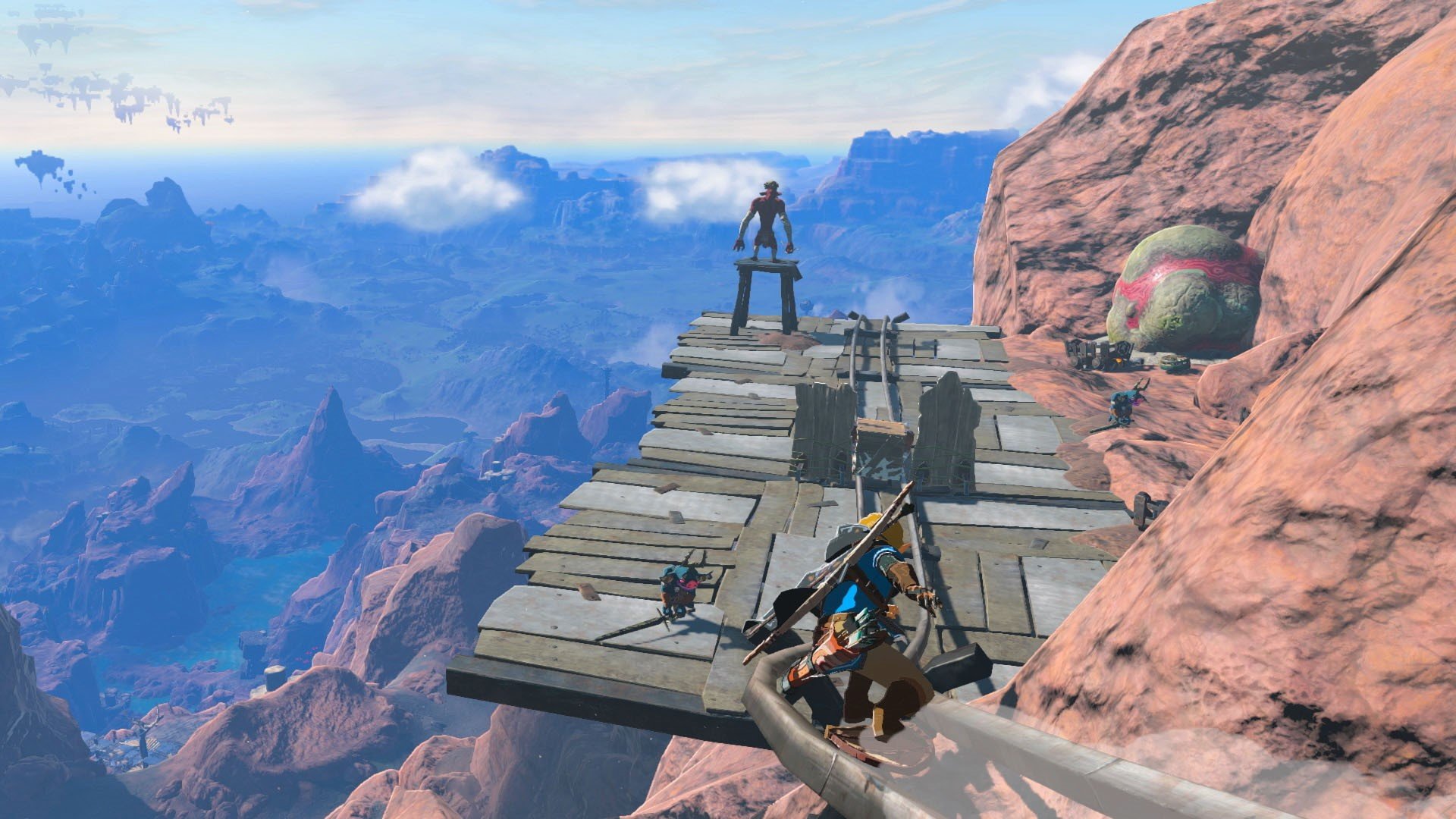How Zelda: Tears of the Kingdom Proves Me Right
Video games, as a medium, owe much to the slightly older medium of tabletop roleplaying games. Hit points, experience points, the constant need to collect more and better armor and weapons to combat increasingly dangerous monsters–many hallmarks of video games, in particular the roleplaying variety, were borrowed from those ancient tomes of the original Dungeons & Dragons (and some, like my colleague Nick at the Papers Pencils blog, argue that TTRPGs still do RPGs better than video games). But this relationship is two-way. Look no further than the recently-funded success, BREAK!! TRPG, to see the influence of video games on TTRPGs in general and even the OSR and its descendants in particular. One such video game that BREAK!! cites as an influence is none other than my topic today: Zelda.
The Legend of Zelda: Tears of the Kingdom recently came from on high to great and immediate fanfare and acclaim. If you are on any form of social media, you have already seen people sharing the various weapons of mass destruction they have been creating using the game’s new system for building vehicles and other tools. But what makes this game, and its immediate predecessor, Breath of the Wild, so compelling is not simply the ability to construct makeshift B-52 bombers; it is the physics of the game. Now, don’t click away thinking I’m about to get into the weeds about how physics work–my scientific knowledge only goes as far as was needed the bare minimum needed to exit a deficient high school over a decade ago. I don’t care about the how of physics in Zelda. I care about why physics is so important to what makes these games fun.
I was climbing a large, marble column (in the game, of course) placed in the middle of a small lake, but I kept slipping and falling off. Link, in these games, can climb with the ease that comes only to those highly-trained climbers, like my colleague, Ty Pitre of the Mindstorm blog, so there must be some reason I couldn’t climb this column! I knew that climbing something while it was raining would make you fall, but it was a sunny day. After only a bit more thought, I realized that it was because I was coming out of the water to climb the column. If I started climbing while dry, I would no longer be too slippery to climb. I set out a platform for me to dry off before my ascent and tested my theory and… it worked! Problem solving is fun, and it was the physics of the game that created the problem and the solution. But it was my own intuition of how things should work that allowed me to find the solution to the problem.
The Legend of Zelda: Tears of the Kingdom validates my theory about realism in TTRPGs. The Zelda games do not care about realism for realism’s sake. You can fight goblins using jury-rigged bomber planes while following the orders of a ghost goat-person to rescue a princess blinking in and out of time. It isn’t going for realism for the sake of realism. To the extent that it attempts to recreate real-world physics, it is to make the consequences of the player’s actions flow logically from those actions, based on the player’s intuition of how things should work. As I argue in the above-linked post, this type of “realism” in games promotes player agency. I won’t go so far as to say that The Legend of Zelda: Tears of the Kingdom is an OSR/Post-OSR game (though I am willing to hear the argument), but it is similar to the OSR in how it places the focus of the game on player agency. It eschews any sense of railroad and embraces its open-world setting with open arms for the same reasons that the arrows Link fires from his bow follow a pseudo-gravity’s rainbow: both enhance the player’s sense of agency in the game. I doubt the designers of Zelda are familiar with OSR precepts such as the ICI Doctrine or Landmark/Hidden/Secret, but they come to many of the same conclusions that the OSR has long-since reached. Given the wild popularity of these Zelda games (and their influence on other wildly popular games like Elden Ring), is it fair to conclude that a wide, general audience hungers for more OSR principles in their games? The dominance of the “OC” play culture is only propped up by the hobby’s most popular IP. Once OSR play styles break into the mainstream TTRPG culture to that extent, I think we will see it embraced with the same fervor as Tears of the Kingdom and Breath of the Wild have been. Maybe it already is breaking through, given the recent success of BREAK!! And Knave 2e. We’ll see.


